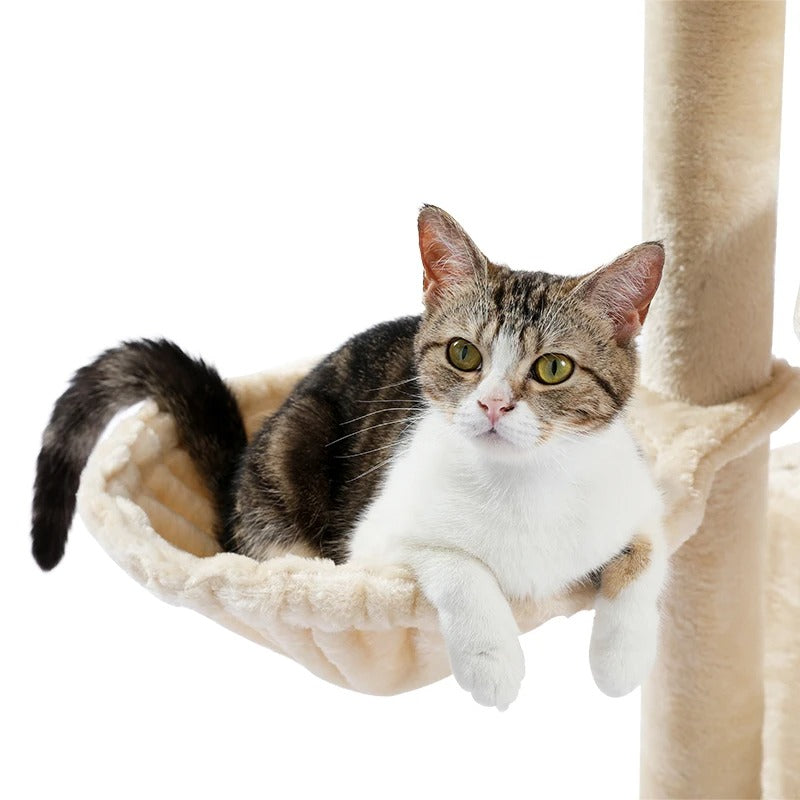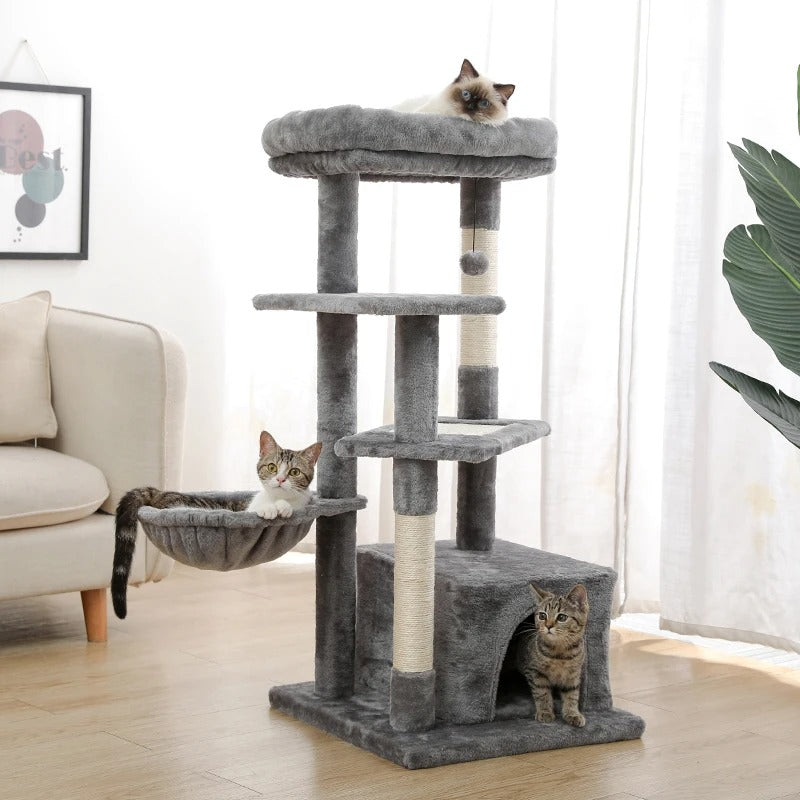Introduction
Cat trees are a fundamental component in a cat's life, especially for those living indoors. They provide essential opportunities for exercise, play, and rest. However, with the myriad of options available in the market, it can be challenging to discern which cat trees offer the best quality and durability. This comprehensive guide will help you understand what to look for when comparing cat trees, ensuring that your investment is both safe and enjoyable for your feline friend.
Understanding the Importance of Quality and Durability
Investing in a high-quality and durable cat tree is important for several reasons:
- Safety: A well-made cat tree reduces the risk of accidents caused by tipping or breaking.
- Longevity: Durable cat trees withstand the rigors of scratching, climbing, and jumping.
- Comfort and Enjoyment: Quality cat trees provide comfortable and engaging spaces for your cat.
Key Features to Consider
1. Material
- Wood vs. Particle Board: Solid wood offers more stability and durability than particle board, which can weaken over time.
- Fabric Choices: Look for high-quality, durable fabrics like heavy-duty carpet or plush material that can withstand scratching and frequent use.
- Sisal Rope for Scratching Posts: Ensure the scratching posts are wrapped with natural sisal rope, which is more durable and appealing to cats than synthetic alternatives.
2. Design and Construction
- Stability: A wide and heavy base is crucial to prevent the cat tree from tipping over.
- Weight Capacity: Check the weight capacity, especially if you have larger cats or multiple cats.
- Accessibility: Consider different levels, ramps, and ease of access, particularly for kittens or older cats.
- Assembly Quality: Look for tight, secure connections in the assembly. Poorly fitted parts can lead to instability.
3. Size and Configuration
- Height and Layout: Taller cat trees with multiple levels are ideal for climbing, but the layout should be balanced to avoid tipping.
- Space-Saving Designs: In smaller living spaces, consider cat trees with a smaller footprint but ample vertical space.
- Features: Additional features like condos, hammocks, or dangling toys can enhance the tree's appeal.
4. Ease of Cleaning and Maintenance
- Removable Components: Washable cushions or detachable parts make cleaning easier.
- Materials: Non-absorbent materials are preferable as they don't retain odors and are easier to clean.
5. Aesthetics
- Style: Cat trees come in various styles to complement your home decor.
- Colors and Patterns: Choose a color or pattern that suits your taste and home furnishings.
Comparing Popular Cat Tree Brands and Models
To illustrate how these factors come into play, let's compare some popular cat tree models:
1. The Classic Carpeted Tower
- Pros: Usually sturdy, comfortable for cats.
- Cons: Can be difficult to clean; carpet may retain odors.
2. The Modern Wooden Tree
- Pros: Stylish, often features solid construction.
- Cons: May lack the plush comfort of carpeted models; can be more expensive.
3. The Space-Saver Model
- Pros: Ideal for small spaces, often with innovative designs.
- Cons: May not provide as much space for climbing and exploration.
4. The Multi-Level Playground
- Pros: Offers various activities; great for homes with multiple cats.
- Cons: Can be bulky; requires a larger space.
5. The Minimalist Design
- Pros: Sleek and modern, easy to clean.
- Cons: Might not be as attractive for cats who prefer cozy, enclosed spaces.
Maintenance Tips for Longevity
- Regular Inspection: Regularly check for loose parts, worn-out areas, and stability.
- Cleaning Routine: Establish a routine to clean the cat tree, focusing on removing hair, dirt, and any stains.
- Replacement Parts: Replace worn-out scratching posts or other elements as needed.
Safety Considerations
- Anchor the Cat Tree: If possible, anchor the cat tree to a wall for added stability.
- Avoid Harmful Materials: Steer clear of cat trees with small, detachable parts or toxic materials.
Conclusion
Choosing the right cat tree involves a careful balance of quality, durability, design, and functionality. By understanding the key features to look for and comparing different types and brands, you can select a cat tree that will provide a safe, enjoyable, and long-lasting environment for your cat. Remember, the best cat tree is one that meets the unique needs of your cat while fitting seamlessly into your lifestyle and home decor. Discover Australia's most affordable range of premium cat trees and towers at cattreehaven.com.au where we bring joy to your feline friends with Australia's best cat trees and towers!
FAQs
Q: How often should I replace my cat tree?
A: It depends on the quality and how heavily it's used. Look for signs of wear and instability as indicators for replacement.
Q: Are expensive cat trees always better?
A: Not necessarily. While price can be an indicator of quality, it's more important to focus on the features and materials that meet your and your cat's needs.
Q: Can I repair a damaged cat tree?
A: Yes, simple repairs like rewrapping scratching posts or tightening screws can be done at home. However, if the structural integrity is compromised, it's safer to replace it.
In summary, investing in a high-quality, durable cat tree is a wise decision for any cat owner. It ensures the safety and enjoyment of your feline friend and can also be a stylish addition to your home. Keep in mind the materials, design, size, and maintenance requirements when making your choice, and you'll find a cat tree that both you and your cat will love for years to come.



